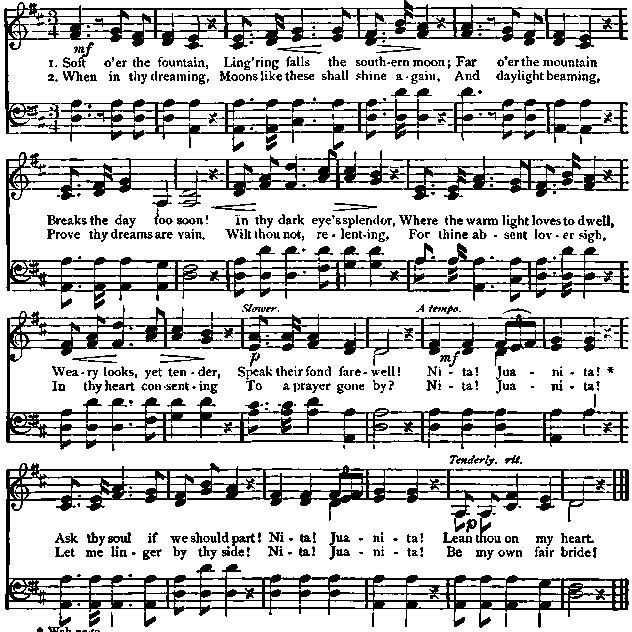Franklin Square Song Collection - online songbook
200 favorite songs and Hymns for Schools, Homes Lyrics & Sheet Music
| Share page | Visit Us On FB |
|
166 FRANKLIN-SQUARE SONG COLLECTION. |
|||
|
Life-Sounds.—We think for a moment of life-sounds, of which there are so many around us. Do you know why we hear a buzzing, as the gnat, the bee, or the cockchafer fly past? Not by the beating of their wings against the air, as many people imagine, and as is really the case with humming birds, but by the scraping of the under-part of their hard wings against the edges of their hind-legs, which are toothed like a saw. The more rapidly their wings are put in motion the stronger this grating sound becomes. Some insects, like the drone-fly, force the air through the tiny air-passages in their sides, and as these pas- |
sages are closed by little plates, the plates vibrate to and fro and make sound-waves. All these life-sounds are made by creatures which do not sing or speak; but the sweetest sounds of all in the woods are the voices of the birds. All voice-sounds are made by two elastic bands or cushions, called vocal chords, stretched across the end of the tube or windpipe through which we breathe, and as we send the air through them we tighten or loosen them as we will, and so make them vibrate quickly or slowly and make sound-waves of different lengths. But if you will try some day in the woods you will find that a bird can |
||
|
JUANITA. |
Spanish Melody, Words by Mrs. Norton. |
||
|
|
|||
 |
|||
|
surpass you over and over again in the length of his note; when you are out of breath and forced to stop he will go on with his merry trill as fresh and clear as if he had only just begun. This is because birds can draw air into the whole of their body, and they have a large stock laid up in the folds of their windpipe, and besides this the air-chamber behind their elastic bands or vocal chords has two compartments where we have only one, and the second compartment has special muscles by which they can open and shut it, and so prolong the trill. Only think what a rapid succession of waves must quiver through the |
air as a tiny bird agitates his little throat and pours forth a volume of song! The next time you can do so, spend half-an-hour listening to him, ortothe canary bird as he swings in his cage, and try to picture to yourself how that little being is moving all the atmosphere around him. Then dream for a little while about Sound, what it is, how marvelously it works outside in the world, and inside in your ear and brain; and then, when you go back to work again, you will hardly deny that it is well worth while to listen sometimes to the voices of Nature and ponder how it is that we hear them.—Miss A. R. Buckley |
||